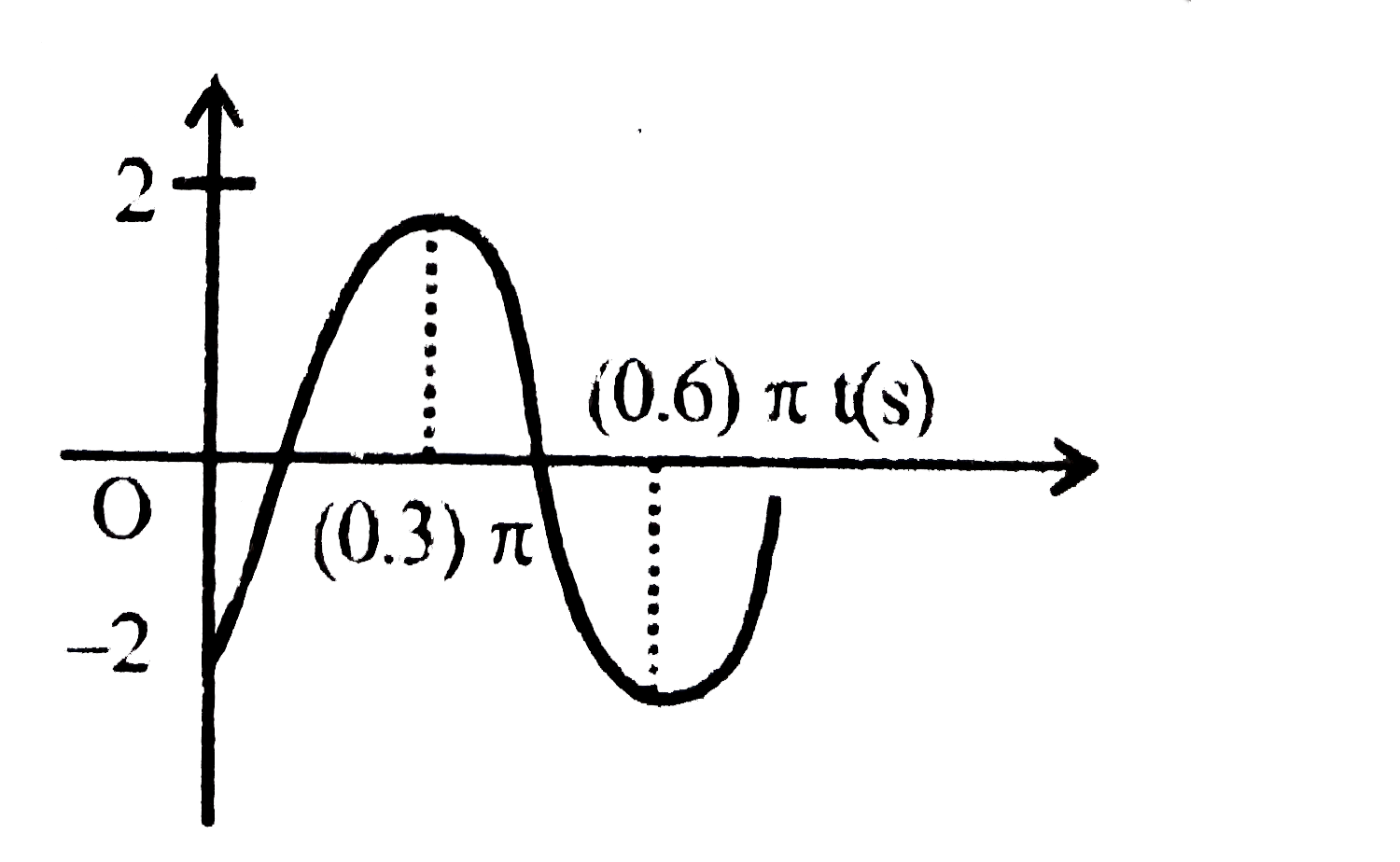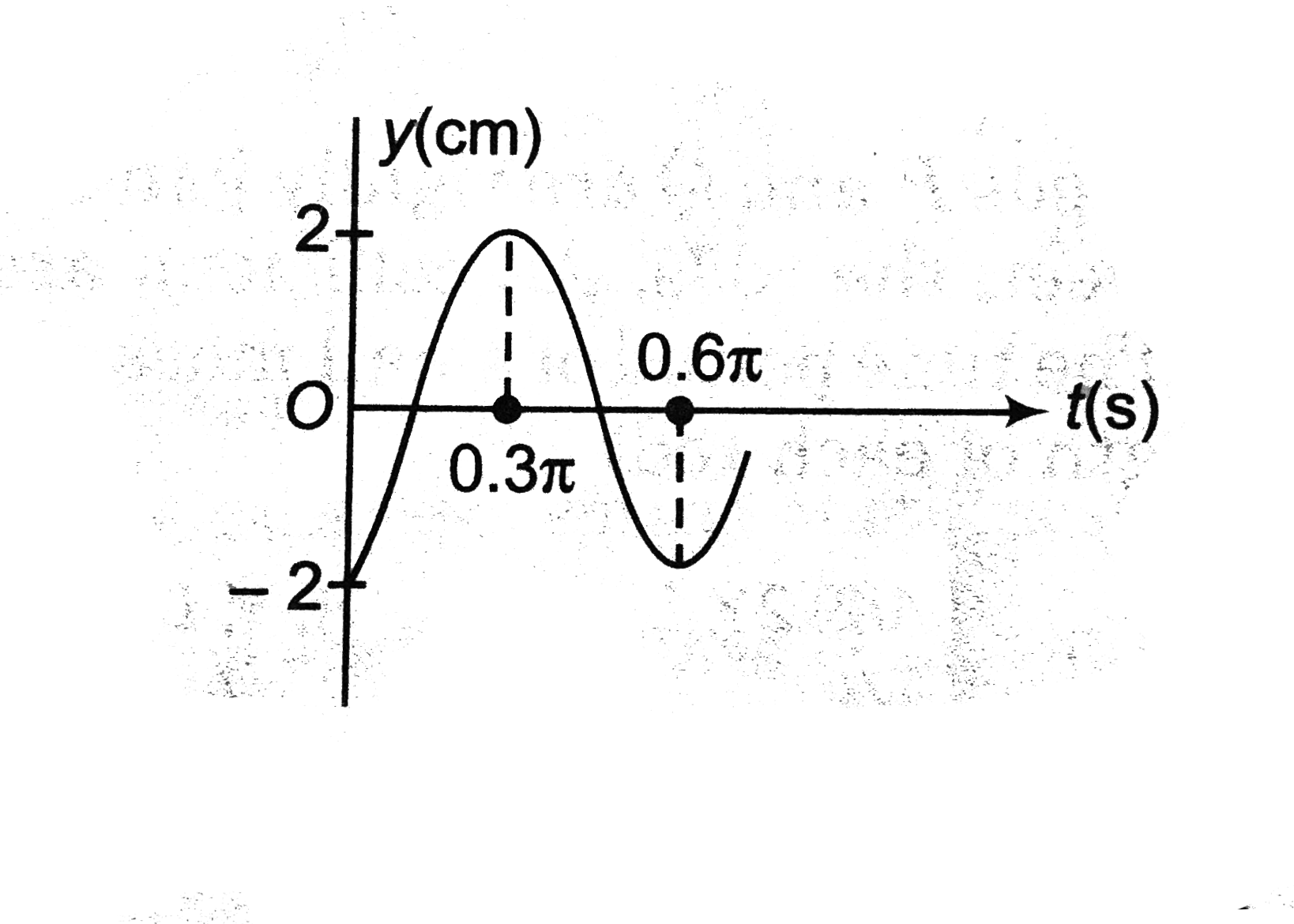Part of a simple harmonic motion is graphed in the figure, where y is the displacement from the mean position. The correct equation describing this S.H.M is-

y =4 cos ( 0.6t)
y=2sin(103t−π2)
y=4sin(103t+π2)
y=2cos(103t+π2)
The correct Answer is:B
Step by step video & image solution for Part of a simple harmonic motion is graphed in the figure, where y is the displacement from the mean position. The correct equation describing this S.H.M is- by Physics experts to help you in doubts & scoring excellent marks in Class 12 exams.
Updated on:21/07/2023Topper's Solved these Questions
- SIMPLE HARONIC MOTION BOOK - MOTIONCHAPTER - SIMPLE HARONIC MOTION EXERCISE - EXERCISE -2 (Leve-I) ( SECTION - B ) ( Time per iod and angu larfrequency in SHM )
7 Videos
- SIMPLE HARONIC MOTION BOOK - MOTIONCHAPTER - SIMPLE HARONIC MOTION EXERCISE - EXERCISE -2 (Leve-I) ( SECTION - C ) ( Two block system )
5 Videos
- SIMPLE HARONIC MOTION BOOK - MOTIONCHAPTER - SIMPLE HARONIC MOTION EXERCISE - EXERCISE -1 ( SECTION - H ) ( Combination of two or more SHM )
4 Videos
- SIMPLE HARMONIC MOTIONBOOK - MOTIONCHAPTER - SIMPLE HARMONIC MOTIONEXERCISE - EXERCISE -3 Section - B Previous Year Problems | JEE MAIN
23 Videos
- SOUND WAVESBOOK - MOTIONCHAPTER - SOUND WAVESEXERCISE - Exercise - 3 (Section - B)
14 Videos
Similar Questions
In simple harmonic motion , the acceleration of the body is inversely proportional to its displacement from the mean position .
View SolutionThe energy of a particle executing simple harmonic motion is given by E=Ax2+Bv2 where x is the displacement from mean position x=0 and v is the velocity of the particle at x then choose the correct statement(s)
View Solution
Knowledge Check
Part of SHM is graphed in the figure. Here, y is displacement from mean position. The correct equation describing the SHM is
 Ay=4cos(0.6t)By=2sin(103t−π2)Cy=2sin(π2−103t)Dy=2cos(0.6t+π2)
Ay=4cos(0.6t)By=2sin(103t−π2)Cy=2sin(π2−103t)Dy=2cos(0.6t+π2)The total energy of a particle, executing simple harmonic motion is.
where x is the displacement from the mean position, hence total energy is independent of x.A(a) independent of x.B(b) ∝x2C(c ) prop xD(d) propx^(1//2)The acceleration of a simple harmonic oscillator is 1m/s2 when its displacement from mean position is 0.5 m. Then its frequency of oscillation is
A√2πHzBπ/√2HzC1√2πHzD√2πHz
In SHM, acceleration versus displacement (from mean position) graph:
View SolutionIn case of a simple harmonic motion, if the velocity is plotted along the X-axis and the displacement (from the equilibrium position) is plotted along the Y-axis, the resultant curve happens to be an ellipse with the ratio =major axis along Xminor axis along Y=20π
What is the frequency of the simple harmonic motion?
View SolutionIn case of a simple harmonic motion, if the velocity is plotted along the X-axis and the displacement (from the equilibrium position) is plotted along the Y-axis, the resultant curve happens to be an ellipse with ratio:
major axis(along X)major axis (along Y)=20π
What is the frequency of the simple harmonic motion ?
View SolutionA particle is executing simple harmonic motion in a conservative force field. The total energy of simple harmonic motion is given by E=ax2+bv2where ‘x’ is the displacement from mean position x = 0 and v is the velocity of the particle at x then choose the INCORRECT statements.{Potential energy at mean position is assumed to be zero}
View SolutionA body is vibrating in simple harmonic motion . If its acceleration in 12cms−2 at a displacement 3 cm from the mean position, then time period is
View Solution
